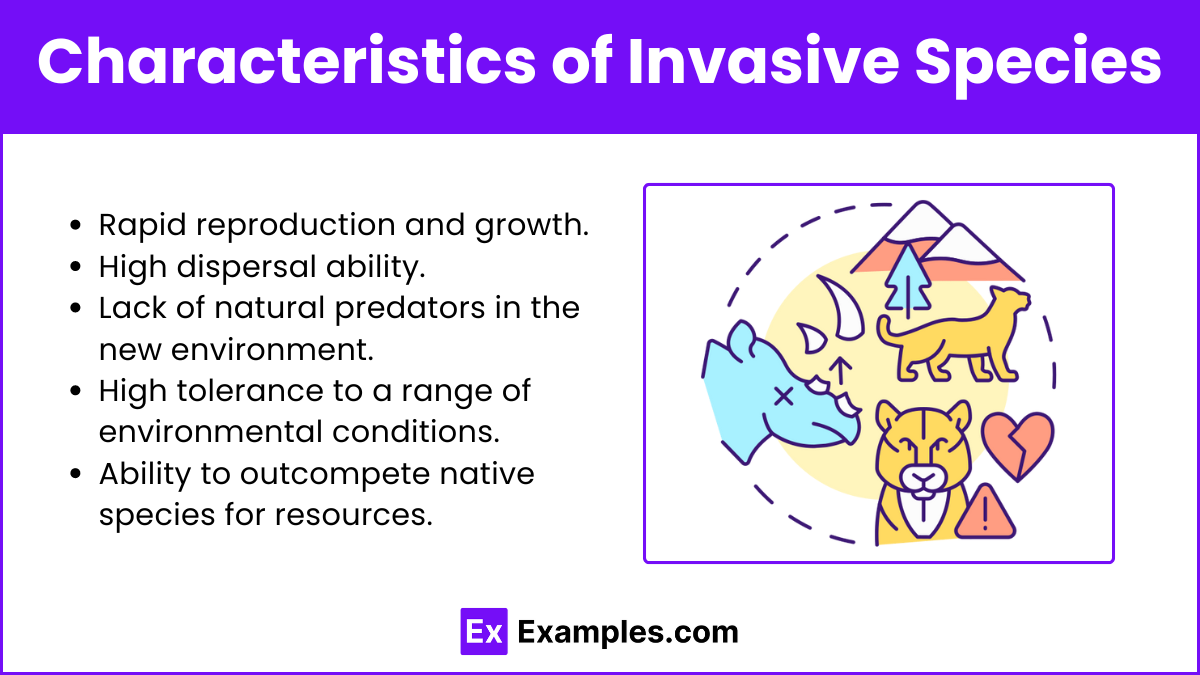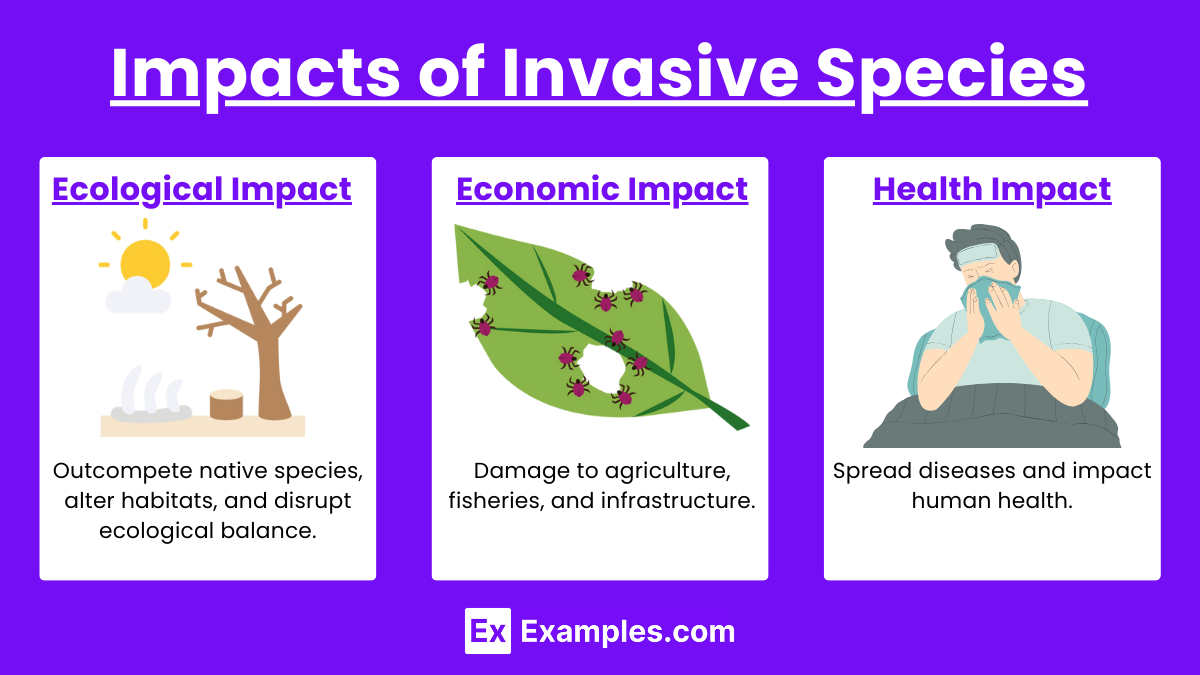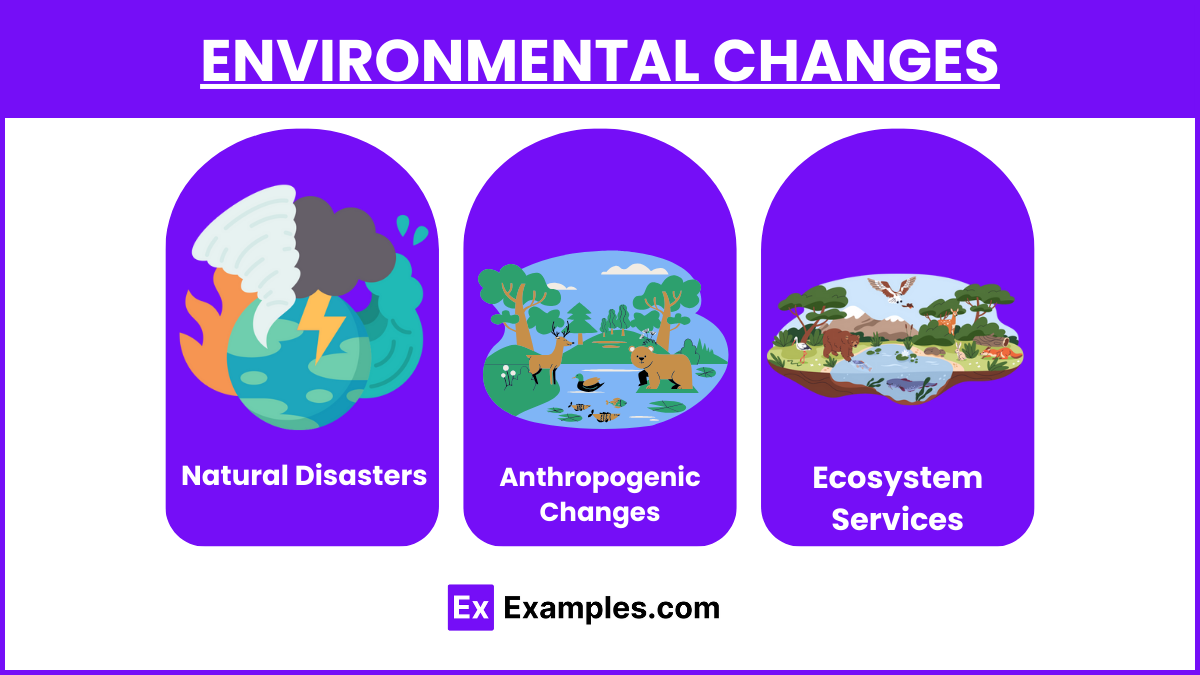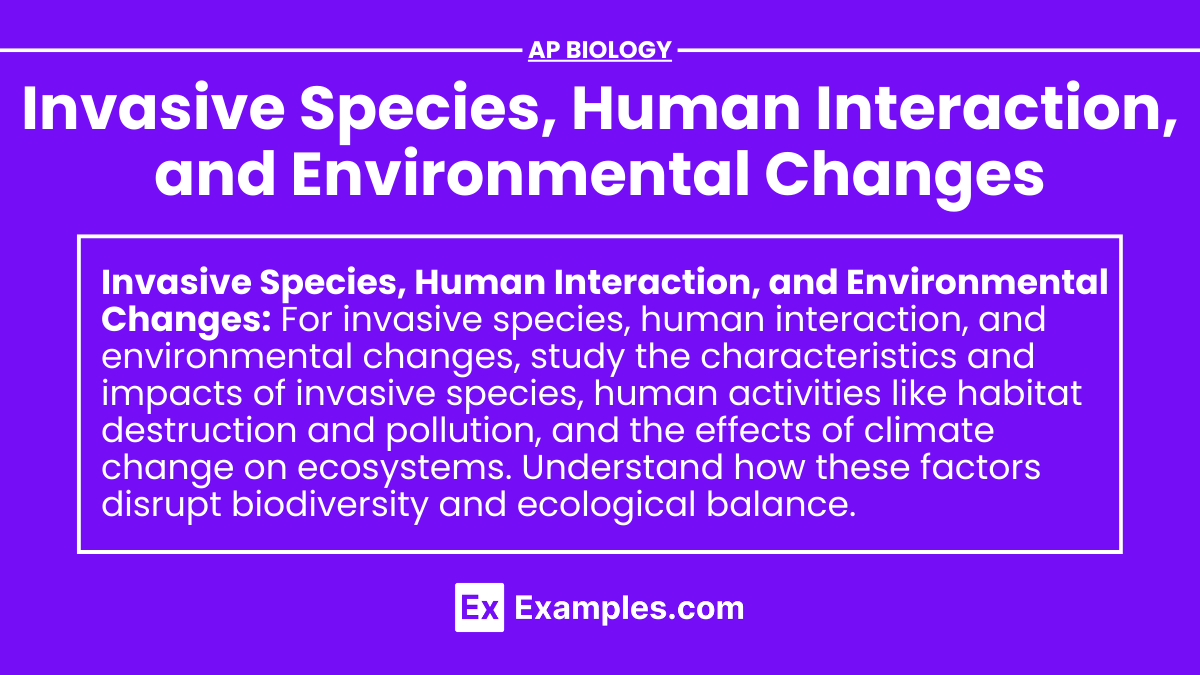In the AP Biology exam, understanding invasive species, human interaction, and environmental changes is crucial. This topic explores how non-native species disrupt ecosystems, the impact of human activities like habitat destruction and pollution, and the effects of climate change on biodiversity. By studying these dynamics, students gain insights into the complex relationships between organisms and their environments, the challenges of conservation, and the importance of sustainable practices for maintaining ecological balance and protecting ecosystem services.
Learning Objective
By studying invasive species, human interaction, and environmental changes, you will learn how non-native species disrupt ecosystems and outcompete native species. You will understand the impact of human activities such as habitat destruction, pollution, and climate change on biodiversity. This knowledge will help you analyze the complex relationships between organisms and their environments, recognize the challenges of conservation, and appreciate the importance of sustainable practices for maintaining ecological balance and protecting ecosystem services.
Invasive Species
Definition
Invasive Species: Non-native organisms introduced to an ecosystem where they cause harm to the environment, economy, or human health.
Characteristics of Invasive Species

Rapid reproduction and growth.
High dispersal ability.
Lack of natural predators in the new environment.
High tolerance to a range of environmental conditions.
Ability to outcompete native species for resources.
Impacts of Invasive Species

Ecological Impact: Outcompete native species, alter habitats, and disrupt ecological balance.
Economic Impact: Damage to agriculture, fisheries, and infrastructure.
Health Impact: Spread diseases and impact human health.
Human Interaction

Habitat Destruction
Deforestation: Clearing forests for agriculture, logging, and urban development reduces natural habitats and biodiversity.
Urbanization: Expanding cities and infrastructure encroach on wildlife habitats.
Agriculture: Conversion of wildlands into farmland disrupts ecosystems.
Pollution
Chemical Pollution: Pesticides, heavy metals, and industrial chemicals contaminate air, water, and soil.
Plastic Pollution: Plastics in the environment harm wildlife and ecosystems.
Nutrient Pollution: Excess nutrients from fertilizers lead to eutrophication and dead zones in aquatic systems.
Climate Change
Greenhouse Gas Emissions: Burning fossil fuels, deforestation, and industrial activities increase levels of carbon dioxide (CO2) and other greenhouse gases in the atmosphere.
Global Warming: Rising temperatures affect weather patterns, sea levels, and ecosystems globally.
Ocean Acidification: Increased CO2 levels lower the pH of oceans, impacting marine life.
Environmental Changes

Natural Disasters
Hurricanes, Earthquakes, and Floods: Drastically alter habitats and species distributions, sometimes permanently.
Volcanic Eruptions: Can create new landforms and habitats but also cause widespread destruction.
Anthropogenic Changes
Habitat Fragmentation: Human activities divide ecosystems into smaller, isolated patches, reducing habitat connectivity and species movement.
Overexploitation: Overfishing, hunting, and harvesting of resources lead to population declines and extinction.
Ecosystem Services
Pollination: Vital for the reproduction of many plants, affecting food production.
Water Purification: Natural filtration by wetlands and forests ensures clean water supplies.
Climate Regulation: Forests and oceans play a crucial role in regulating the Earth's climate by absorbing CO2.
Examples
Example 1: Zebra Mussels in the Great Lakes
Description: Zebra mussels are invasive mollusks introduced to the Great Lakes via ballast water from ships.
Impact: They outcompete native species, clog water intake pipes, and alter aquatic ecosystems by filtering out significant amounts of plankton.
Example 2: Cane Toads in Australia
Description: Cane toads were introduced to Australia to control agricultural pests.
Impact: They became invasive, preying on native species, competing for resources, and secreting toxins harmful to predators.
Example 3: Burmese Pythons in the Florida Everglades
Description: Burmese pythons, released or escaped from captivity, established populations in the Everglades.
Impact: They prey on native wildlife, causing declines in populations of mammals, birds, and other reptiles.
Example 4: Deforestation in the Amazon Rainforest
Description: Large-scale logging and land conversion for agriculture are destroying vast areas of the Amazon.
Impact: Habitat loss leads to reduced biodiversity, disrupted ecosystems, and increased carbon emissions contributing to climate change.
Example 5: Coral Bleaching
Description: Increased sea temperatures cause coral bleaching, where corals expel symbiotic algae and turn white.
Impact: Bleached corals have reduced growth rates, decreased reproductive success, and increased mortality, affecting entire marine ecosystems.
Multiple Choice Questions
Question 1: Which of the following is a common impact of invasive species on native ecosystems?
A. Increased biodiversity
B. Stabilization of food webs
C. Outcompeting native species for resources
D. Decreased environmental pollution
Answer: C. Outcompeting native species for resources
Explanation: Invasive species often outcompete native species for resources such as food, space, and light, leading to declines in native populations and disrupted ecosystems.
Question 2: How does deforestation in the Amazon Rainforest contribute to climate change?
A. By increasing oxygen production
B. By decreasing carbon dioxide levels
C. By increasing carbon emissions
D. By stabilizing global temperatures
Answer: C. By increasing carbon emissions
Explanation: Deforestation results in the release of stored carbon in trees into the atmosphere as carbon dioxide, a greenhouse gas, contributing to global climate change.
Question 3: What is a primary consequence of coral bleaching?
A. Increased coral growth rates
B. Enhanced coral reproductive success
C. Increased mortality of corals
D. Stabilization of marine ecosystems
Answer: C. Increased mortality of corals
Explanation: Coral bleaching leads to the expulsion of symbiotic algae, reducing corals' energy intake and increasing their susceptibility to disease and death, thus destabilizing marine ecosystems.


